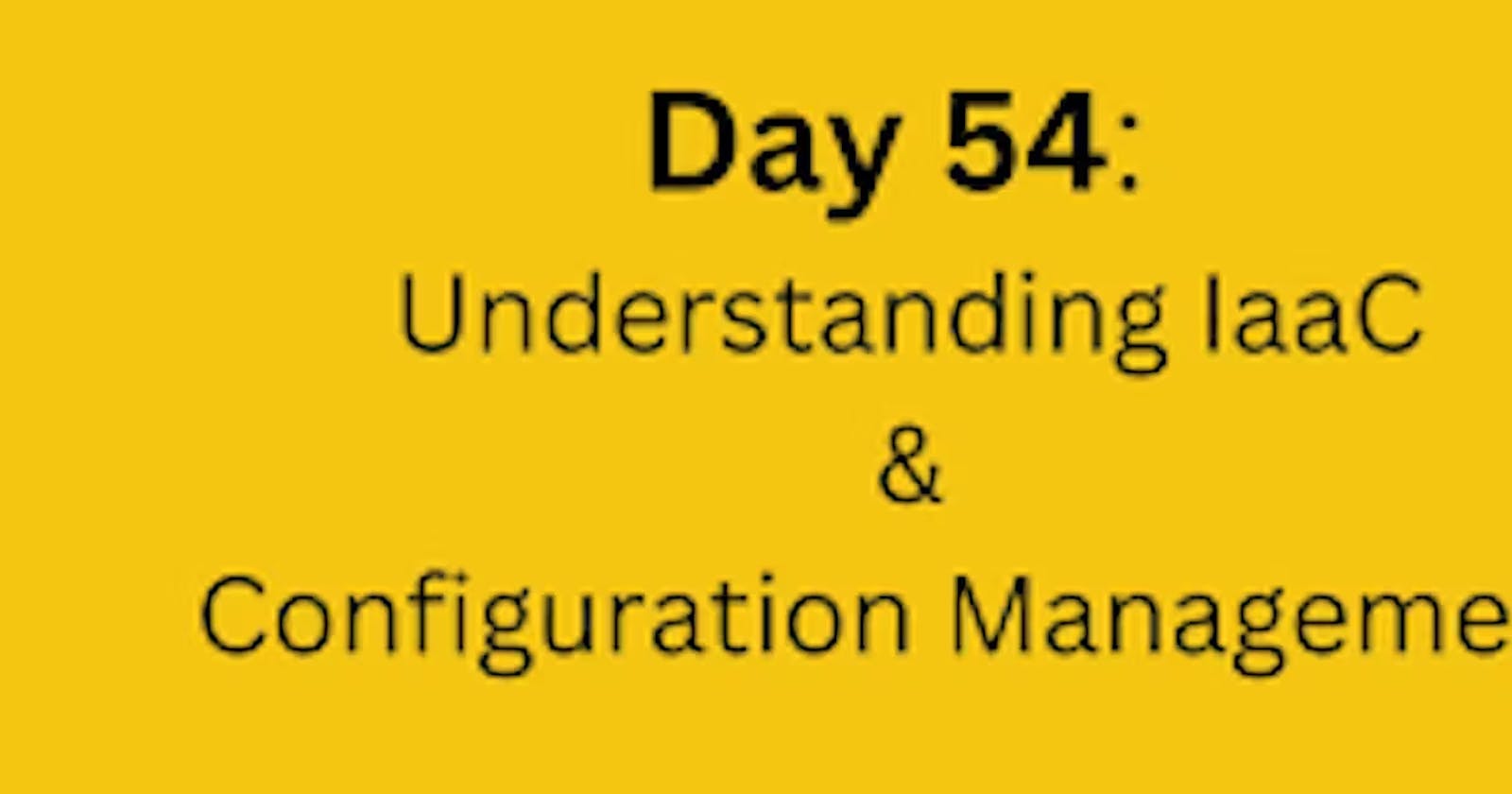Day 54: Understanding Infrastructure as Code and Configuration Management
day54 of 90daysofdevops
Table of contents
🤔 What's the difference bhaiyya?
When it comes to the cloud, Infrastructure as Code (IaC) and Configuration Management (CM) are inseparable. With IaC, a descriptive model is used for infrastructure management. To name a few examples of infrastructure: networks, virtual computers, and load balancers. Using an IaC model always results in the same setting.
Throughout the lifecycle of a product, Configuration Management (CM) ensures that the performance, functional and physical inputs, requirements, design, and operations of that product remain consistent.
🚀 Task-01
👉 Read more about IaC and Config. Management Tools
Here's a more detailed explanation of each and some commonly used tools:
- Infrastructure as Code (IaC): Infrastructure as Code is an approach to managing and provisioning infrastructure resources using code, typically in the form of declarative configuration files. With IaC, infrastructure configurations are defined and managed through code, enabling version control, automation, and reproducibility. This approach brings several benefits, such as scalability, consistency, and faster provisioning.
IaC tools allow you to define and manage infrastructure resources across different cloud providers or on-premises environments. Here are some widely used IaC tools:
Terraform: Terraform is a popular open-source tool that provides a declarative language to define infrastructure configurations. It supports multiple cloud providers, including AWS, Azure, and Google Cloud Platform, as well as other services like Kubernetes. Terraform allows you to create, modify, and destroy infrastructure resources, ensuring the desired state is maintained.
AWS CloudFormation: AWS CloudFormation is a service-specific IaC tool provided by Amazon Web Services. It enables you to describe infrastructure resources and their dependencies using JSON or YAML templates. CloudFormation templates can be used to provision and manage resources within the AWS ecosystem, making it easy to replicate and maintain infrastructure configurations.
- Configuration Management: Configuration Management tools focus on managing and maintaining software and system configurations across multiple servers or instances. They enable system administrators and DevOps teams to automate the process of configuring and maintaining servers, ensuring consistency and enforcing desired states.
These tools are particularly useful in managing application deployments, system configurations, and software installations. Here are a couple of popular Configuration Management tools:
Ansible: Ansible is an open-source tool that uses declarative language to define system configurations. It operates over SSH or PowerShell and does not require any additional agent installation on target systems. Ansible offers a wide range of modules to perform various configuration tasks, such as package installations, service configurations, and file deployments.
Puppet: Puppet is a widely used Configuration Management tool that follows a client-server architecture. It uses a declarative language called Puppet DSL to define system configurations and manage the desired state of systems. Puppet allows you to define configurations centrally and distribute them to managed nodes, ensuring consistency across your infrastructure.
👉 Give differences between both with suitable examples
The main difference between Infrastructure as Code (IaC) and Configuration Management (CM) is that IaC focuses on managing and provisioning infrastructure through code*, while* CM focuses on automating the configuration and management of software applications, operating systems, and servers.
Infrastructure as Code (IaC) is a practice of managing and provisioning IT infrastructure through code. IaC allows teams to manage infrastructure in a repeatable, scalable, and automated manner. With IaC, infrastructure components such as virtual machines, networks, and storage can be defined as code, which can be version controlled, tested, and deployed like any other codebase.
Configuration Management (CM)*, on the other hand, is the practice of automating the configuration and management of software applications, operating systems, and servers. CM tools help teams automate the installation and configuration of software packages, enforce security policies, and manage system settings.*
While IaC focuses on the infrastructure layer, CM focuses on the application layer. However, both concepts work together to help teams automate and manage their IT infrastructure more efficiently.
👉 What are the most common IaC and Config Management Tools?
The most common Infrastructure as Code (IaC) and Configuration Management tools are:
IaC Tools:
Terraform
AWS CloudFormation
Azure Resource Manager (ARM) Templates
Google Cloud Deployment Manager
HashiCorp Packer (for creating machine images)
Configuration Management Tools:
Ansible
Puppet
Chef
SaltStack
PowerShell Desired State Configuration (DSC)
ThankYou
Happy Learning!
